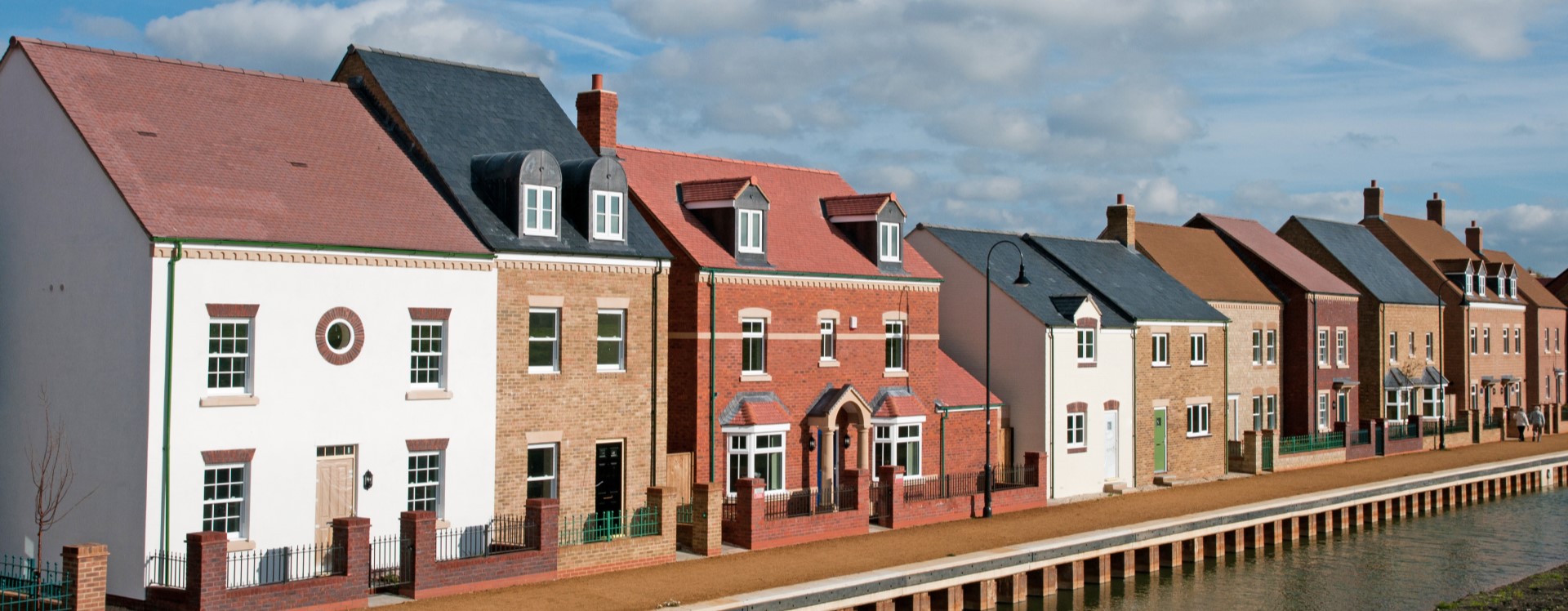Building surveying in Swindon is typical of much of the country. The defects we see in Swindon and surrounding towns such as Chippenham and Cirencester are often damp-related or associated with the use of non-standard construction techniques, reflecting the build types of houses in the region.
Swindon is a truly historic neighbourhood. Indeed, there is evidence that people settled there as far back as Roman times. Although large-scale population growth wasn’t seen until the 19th century, the town has a lengthy history.
In Swindon itself, most properties are built on Kimmeridge Clay, but around the county of Wiltshire you can find properties built on the limestone beds of the Corallion ridge, on Oxford clay and on areas of loam. Clay can be a concern because shrinkage of clay soils due to tree roots and droughts can destabilise foundations. Fortunately, however, Swindon does not appear to be a subsidence hotspot (although cracks, particularly progressive cracking, should always be investigated by a structural expert).
Period stone property surveys
Growth of the town was fairly slow between the publication of the Domesday book and the mid-19th century. The surviving houses from this period are mainly built of stone. The mortars used when such properties were built were typically quite weak. This means that repeated wetting and drying (unfortunately a common weather pattern in this area!) erodes the mortar. This can allow water ingress and even make a property structurally unstable.
Repointing needs to be done with care with a lime-based mortar; using cement mortars does not allow a natural-stone property to breath. If a cement mortar is used, moisture from within the property can only escape via the stonework, and the resulting frost weathering and salt crystallisation can lead to the breaking up and erosion of the stone surface. Using cement mortar therefore increases the likelihood of damp by allowing water ingress through eroded stonework. It can also prevent the escape of condensation, which would otherwise occur if a breathable mortar was used. In severe cases, use of the wrong mortar and associated erosion can eventually lead to structural damage.
When surveying period stone houses in the Swindon/Wiltshire area, our RICS surveyors pay particular attention to any structural alterations or additions (these works were usually done before properties were listed). While the original building may have been standing for centuries, alterations can be much newer. We will assess them against building standards and regulations and check that they structurally sound enough to stand the test of time.
Surveying Swindon’s red brick houses
Industry arrived in Swindon in the mid-1800s, when the Great Western Railway Company chose the town as the location of its railway works. Hundreds of cottages were built for employees and the population grew. To meet the need for rapid development brickworks sprang up, making use of the local Kimmeridge clay to produce distinctive red bricks for the railway works and associated properties.
From long terraces to detached houses and elaborate Victorian buildings, red brick could be seen all over the region. As with stone, our surveyors commonly see 19th century brick houses that have been repointed incorrectly using unbreathable cement-based mortar, rather than breathable lime-based pointing. This leads to crumbling brickwork and damp problems.
In the mid-1900s, as mortar reached the end of its natural lifespan and pointing started to look shoddy, there was a trend towards covering original brickwork in cement or pebble-dash renders. These renders form what is effectively a water-tight seal over the property. If these rendering techniques are used on houses built before the introduction of cavity walls, our building surveyors will frequently find internal damp and plasterwork issues, and external damp and erosion of brickwork. Resulting repairs can be very expensive.
Post-war property building surveys
At the end of the second world war, the town grew again. Owing to shortages in materials and labour following the war, non-standard construction methods were used to provide new housing stock quickly and cheaply.
Easiform Houses are still found across Swindon. These were constructed using pre-fabricated concrete, and as a result were quick and cost-effective to build. Many of these houses have survived without any major structural issues, although there are some defects that are particular to these types of property that our building surveyors look out for. Many of these properties are not well insulated and additional insulation may be required. In common with many properties built in the post-war years, asbestos was frequently used and surveyors will be on the look out for signs of asbestos. Surveyors will also check for rust-staining which could indicate corrosion of steel within the concrete structure. A building survey will also look for evidence of concrete deterioration due to carbonation.
Building surveys of modern Swindon homes
In recent years access to new building materials and better standards of construction have reduced the occurrence of many of the problems described above. Nevertheless, our surveyors are always on the lookout for structural movement, damp and other common defects.
Cavity wall insulation has been extensively installed in the past few decades. While it can improve a property’s thermal efficiency substantially, poor workmanship or inappropriate use can result in damp and structural deterioration.
Timber-framed houses have also become more common, and a building survey will check for signs of warped timbers, rot and infestation. Cavity wall insulation is never appropriate for a timber-framed house but was unfortunately added to many properties in the late 20th century. The insulation prevents air circulating and can lead to rotting of the timber structure, sometimes resulting in severe structural damage. During a building survey of a timber-framed house, surveyors look out for indications that cavity insulation may have been used, such as plug holes in the mortar pointing or damp. Not only can the damage be difficult to repair, but mortgage companies are reluctant to lend on timber properties with cavity wall insulation.











